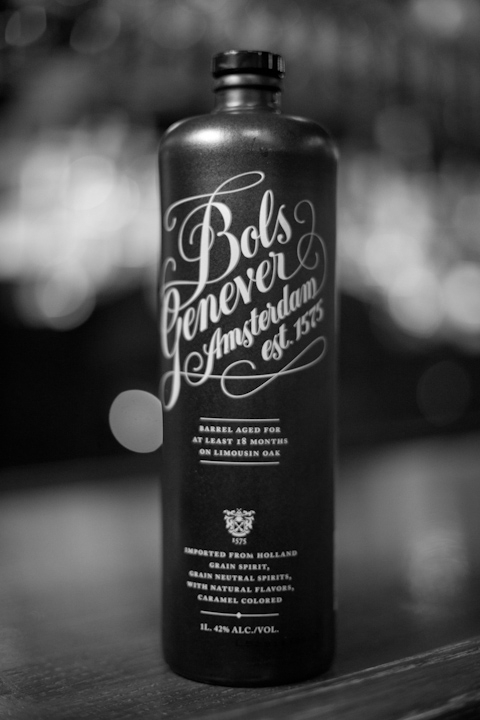From guest blogger Stephanie Moreno:
“Genever needs to be courted.” --Gaz Regan
On a recent rainy, chilly August afternoon, an invitation to a dark, cozy lounge seemed a perfect idea. I was further enticed with the promise of a sneak peek of the new Bols Barrel Aged Genever to be released in September (and expected to retail for about $50). Held at NoHo’s The Vault at Pfaff’s bar, invited guests were given an opportunity to meet and listen to Piet Van Leijenhorst, Bols’ Master Distiller. Frank Cisneros, their Brand Ambassador, was on hand to shake and stir cocktails, and I couldn’t wait to learn (and taste) it all.
As we waited for the presentation to begin, we were given an “aperitif” so to speak: a Genever Collins cocktail. I loved the bright and sunny lemon drink as it was such a stark difference from the wet and rainy day. The Genever’s weight added a nice richness with a touch of sweetness that balanced the acidity of the drink.
Subsequently, Van Leijenhorst began his discussion of the product he clearly is proud to make. He discussed his desire for Americans to think not think of Genever as a gin, but rather more like a whiskey. He then explained how their Genever is made, and so shall I:
Genever technically is a type of gin, but to all intents and purposes, it is best to think of Genever as its own category. In fact, in 2007, it was given protected spirit status like Cognac. There are a few types of Genevers out there, but let’s just talk about two: Oude (old) and Jonge (young). These are types that do not refer to the Genever’s time aging, but rather the amount of “malt wine” that is used in its production. Oude has to use at least 15% malt wine, Jonge is less than 15%. It is easy to remember in the sense of old vs. new school methods. In Bols' case, they use over 50%. But, what is this malt wine?
According to Van Leijenhorst, it is a “critical thing” and “the overwhelming taste comes from the malt wine.” It consists of rye, wheat and corn that is triple-distilled (once in column and twice in pot stills) and then allowed to marry for six to eight weeks. The juniper and other botanical distillates (which include hops, anise, cinnamon and ginger root, among others) are then added to the malt wine. This is then aged for at least 18 months in new and used Limousin oak barrels.
As the education continued, we were given the Aged Barrel Genever neat in an Old Fashioned glass, sans ice. Upon nosing the spirit, I found subtle wood spices from the wood aging with the tasting profile leading to a lush and spicy sip. Notes of juniper, vanilla, pine, mint and cinnamon were some of what I discovered. Variations of the classic cocktails the Manhattan and the Mint Julep were served to highlight the idea that Genever can be a substitute for American whiskey. I do agree with this sentiment, but as lovely as the cocktails that Frank made for us were, my favorite “cocktail” was just slowly sipping the Genever neat, room temperature. My hope is that whether you are a gin lover or a whiskey lover, you ease into a relationship with Genever. As Gaz Regan said, Genever “…deserves to be courted and loved for its very distinctive personality.” Hear, hear, sir!
Stephanie Moreno is a professional spirits taster and can be found on Twitter @brooklynwino.


